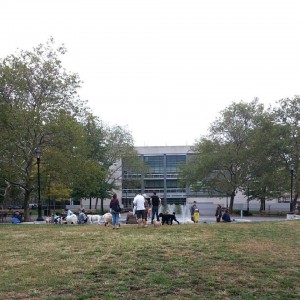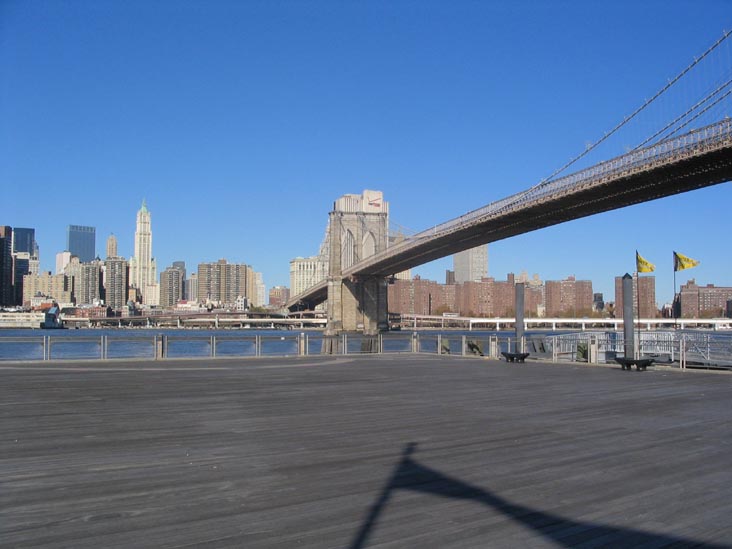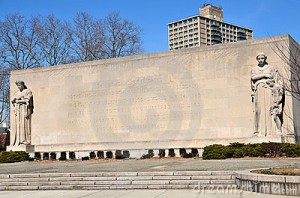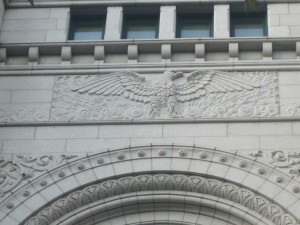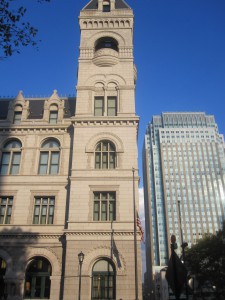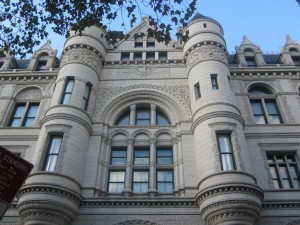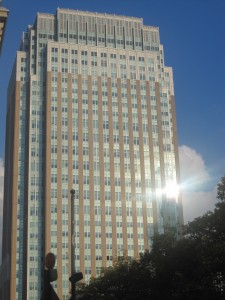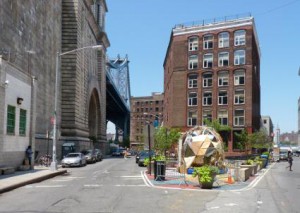
I’m native to the Queens area of NYC but I’ve recently been finding myself exploring areas around Brooklyn. Not only is my college located in this borough, but we’re using it’s rich history to explore ideas and evoke thought on it’s modern day impact. On one of my trips to my college, a friend of mine recommended I explore the area known as “Dumbo”. I was intrigued by his experience in that area. Since then , its been stuck in the back of my head and its only been recently that the idea of exploration has come to my English classroom. We’ve been reading about how writers like Nelson George and Colson Whitehead, explained their experience in this city using vivid detail and reflecting on the idea of how their environment help mold them to the person they became known for. My childhood was spent growing up in Queens and I also graduated from a high-school in Queens, so its safe to say I never got around much. I would rarely go to into the city and only on rare occasions would I ever set my foot in Brooklyn. Before starting college, I thought of Brooklyn as a desolate area with a lot of violence but then I learned that place is actually called Maspeth Creek. It was all a mystery to me. So, imagine my surprise when I got a lesson on how much history Brooklyn really has! As always, we would not have history if we were not able to look back into the past and compare it with current times.
My trip began going under an overpass and standing right next to the York St train station. I stood at the corner, taking in the ambiance of being in Brooklyn. I then continued walking up Jay street and exploring everything on my path. I took a left at Water street and then paused to look at the ground in the street. The ground underneath it was exposed with a layer of bricks. It somehow accented the environment. Normally, the streets are carefully cemented with black tar and all of that makes it presentable and acceptable by today’s standards. Streets that look old and exposed, tend to be overlooked. But in this case, the surrounding buildings and their design welcome the exposed street in the sense that they looked like they belong together. It was very much like in the same way a dirt road goes with a village hut, snow with an igloo and a desert with cactus. I continued walking down Water Street until I came across this small plaza. Right next to this plaza was the Manhattan Bridge. Normally, you would see a bridge from a distance or while you’re driving over it, but standing right next to it is a different experience. It was really amazing standing under the stupendous intrados of the Manhattan bridge. It made me stop and admire the amount of work that went into building it. I walked under it and it had a vast open space. It had wonderful acoustics and the echoes were beautiful. Then, I took this time to take pictures of this area. I was really enjoying my time in Dumbo and so I continued to explore a bit more. I stood at a corner of the plaza which could help capture a good view of the intrados and the surrounding area. I had an overwhelming feeling that I was at the edge of a major discovery.
The name of the plaza is Pearl St Plaza. Adjacent to the plaza was a building, and one thing I forgot to point out is that all the buildings surrounding the plaza were made of bricks! There were no contemporary buildings in the vicinity. Now, the view of the Manhattan Bridge’s intrados is welcoming. Both these structures could have been built around the same time because they both give off a very quaint feeling. The beginning structure of the bridge is not made up of steel, it is made from concrete. Most bridges are all entirely made up of metal. The fact that the foundation of this bridge is made up of concrete only makes it more historical. It shows the style of that era in Brooklyn so in other words, its a historic site. One thing I noticed in Dumbo is that it has many buildings that are made out of brick and don’t look dilapidated. But around where I live, in Queens, there are also buildings made out of bricks, but they have steel frames and the new bricks, well, are new. The newly constructed buildings have bricks that are on the lighter side of orange but the ones in the Dumbo have a deep dark red color to it. You can distinguish how old a building may look simply by looking at the color and quality of it. The buildings that I saw around Pearl St Plaza had a dark red color to it and it had no alterations added. Each floor had rows of individual white painted windows. You don’t normally see this pattern anymore: dark red buildings with white windows. So, its all these small details that create the quaint feeling. Its the fact that these details are in juxtaposed with todays standards. For example, there is a Chase Bank building right at the corner or Front and Jay St. This building has metal exterior and its design is very contemporary and It also has large windows with metal frames. This building, when juxtaposed to the buildings near it, will be easily concluded as a modern building because its not made up of bricks with white frame windows.
To be honest, I chose this area in Brooklyn because its the only area that came to mind. I was also a bit curious as to see what the fuzz was about now that I was actually in Brooklyn. In his memoir,City Kid, Nelson George talks about his transition from Queens to Brooklyn and how it affected him as a whole. “Yet, as I came to understand the place where mentoring, criticism, and producing overlapped….I had a nurturing gene, that first manifested itself at 19 Willoughby, and that would blossom in the years ahead, and would, in fact, define my life, and self-image, as much as writing” (George, 182). What I learned from this quote is how the surroundings truly affect how you grow up and how it helps you as you grow up. Nelson’s new apartment was huge compared to the public housing he grew in as a child. That already is a change in comfort and that, along with the ambience he took in from the young African-American culture that was thriving during that era, helped his writing become more honest. He wasn’t making anything up, he was just writing what he saw and what he felt and understood from it. This is the same approach I took when writing this paper. The change that Dumbo helped me see what that history is all around us and it should be admired. Before, the Manhattan Bridge was just another bridge to me but now that I was able to stand right next to its foundation, I truly began to admire its existence.
Along with Nelson George, Colson Whitehead’s The Colossus of New York, also sheds light on how we all have our own personal New York City. “You start building your private New York the first time you lay eyes on it” (Whitehead). My own New York City is still in the works. I never have gotten around much in all my years living in this city but it seems like that is slowly starting to change. I would never go into the city but now my job is located in the epicenter of New York madness: Time Square. College is an entirely new experience to me and its located in an entirely new borough as well. I’m slowly finding myself exploring the areas around these locations and it is helping me understand that I have been taking the whole NYC area for granted. There are many locations with wonderful views and rich history that could leave a person in awe. Also, as humans, it is in our nature to move and explore and I believe that many people are not doing so. They are so consumed with todays technology that they never leave their home or are completely unaware that places like the Brooklyn Heights Promonade exist. Every new locations I come across is a new brick added to my personal city. Our city is like no ones else because it only exists through our eyes. Dumbo is now my own personal spot to enjoy a sunny day out in Brooklyn.
Works Cited
George, Nelson. City Kid: A Writer’s Memoir of Ghetto Life and Post-Soul Success. New York: Viking, 2009. Print.
Whitehead, Colson. The Colossus of New York. S.l.: Knopf Doubleday Publishing Group, 2007. Print.

